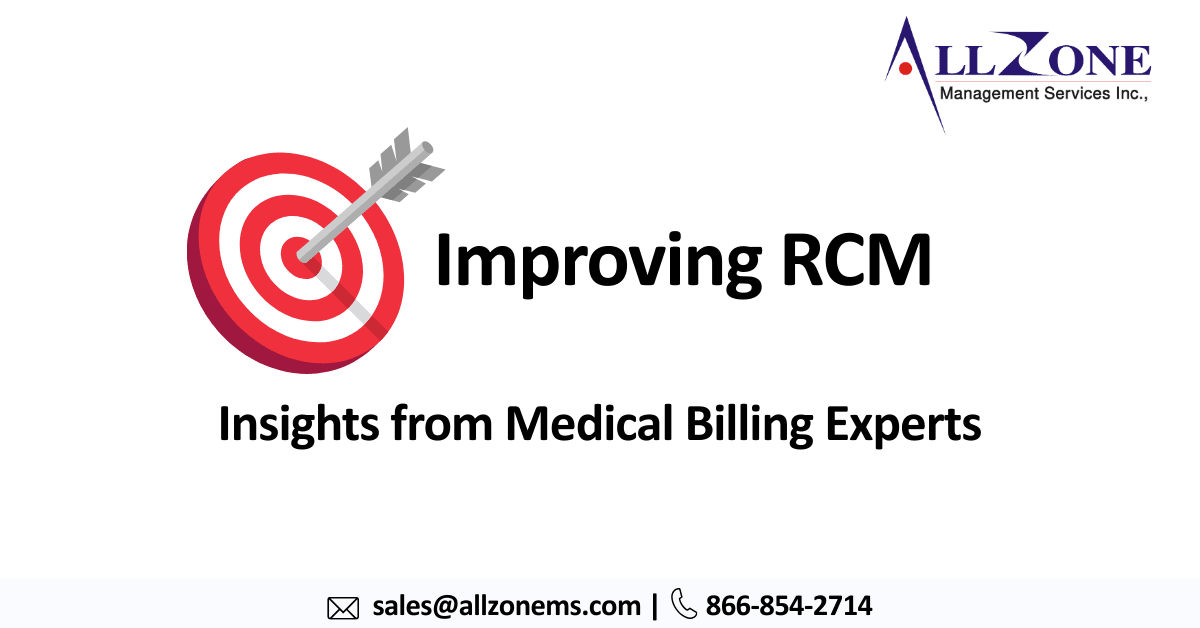The revenue cycle management process (RCM) must be optimized for financial stability and growth in today’s competitive healthcare landscape. As a result of a smooth RCM process, revenue leakage is minimized and profitability is maximized. With this newsletter, leading medical billing experts share their insights on how to streamline and optimize Revenue Cycle Management.
The Revenue Cycle: A Breakdown
It consists of all the administrative and financial processes involved in collecting payment for healthcare services provided. The key stages are:
- Patient Registration and Scheduling: It is essential to obtain accurate information about the patient’s demographics and insurance coverage.
- Pre-Authorization: Payments for specific services are streamlined when prior authorization is obtained from payers.
- Charge Capture: To receive appropriate reimbursement, it is essential to code and document services rendered accurately and completely.
- Claim Submission: The processing of clean claims is sped up and errors are reduced by submitting them electronically.
- Payment Posting and Denial Management: It is very important to post received payments promptly and follow up on denials in order to ensure prompt payment.
- Account Receivables Management: In order to maintain a healthy cash flow, outstanding balances are closely monitored and collections are pursued proactively.
Challenges in RCM: A Glimpse into the Bottlenecks
Several factors can hinder RCM efficiency. Here are some common RCM challenges:
- Coding Errors: Inaccurate coding leads to claim denials and delays, impacting revenue.
- Data Entry Mistakes: Incorrect patient information or missing details can disrupt the entire cycle.
- Lack of Automation: Manual processes are slow and prone to human error.
- Ineffective Denial Management: Failure to address denials promptly can lead to lost revenue.
- Poor Communication: Lack of clarity between providers, payers, and patients creates confusion.
Expert Insights: Strategies for Streamlined RCM
1. Invest in Technology: Utilize electronic health records (EHRs) with integrated coding functionalities to minimize errors. Explore revenue cycle management software for automation, streamlined workflows, and improved reporting.
“Implementing a robust RCM software not only reduces errors but also provides real-time data insights for proactive decision-making.” – Healthcare Revenue Cycle Consultant
2. Embrace Automation: Automate tasks like pre-authorization requests, claim scrubbing, and appointment reminders to free up staff and improve efficiency.
“Automation can significantly reduce administrative burdens, allowing staff to focus on higher-value activities like patient interaction.” – Healthcare IT Director
3. Prioritize Accurate Coding: Invest in staff training, conduct regular audits, and leverage coding compliance tools to ensure accurate and up-to-date coding practices.
“Strict adherence to coding guidelines minimizes denials and delays, leading to faster and more consistent reimbursements.” – Medical Billing and Coding Supervisor
4. Boost Denial Management: Implement a structured denial management system to analyze root causes, identify trends, and develop targeted strategies for resolving denials quickly and effectively.
“A proactive approach to denial management can significantly improve your revenue collection rates.” – Healthcare Revenue Cycle Manager
5. Strengthen Communication: Foster clear communication between providers, payers, and patients. Educate patients about their billing responsibilities and offer flexible payment options.
“Transparency and open communication are key to reducing patient confusion and fostering positive relationships.” – Patient Advocate
Harnessing the Power of Data Analytics
Data analytics plays a crucial role in optimize Revenue Cycle Management. Utilize your RCM software’s reporting features to gain insights into key metrics like:
-
- Denial Rates: Identify areas with high denial rates and implement targeted solutions.
- Average Collection Times: Track how long it takes to collect payments and identify areas for improvement.
- Coding Accuracy: Monitor coding patterns to ensure consistency and compliance.
- Staff Productivity: Evaluate staff performance and identify opportunities for training and process improvement.
By analyzing these metrics, you can identify bottlenecks in your RCM process, develop data-driven strategies for improvement, and track the effectiveness of your efforts.
Building a Culture of Revenue Cycle Excellence
Optimize Revenue Cycle Management requires a collaborative effort across your organization. Here are some tips for fostering a culture of revenue cycle excellence:
-
- Leadership Commitment: Executive leadership needs to champion RCM initiatives and allocate resources for improvement.
- Staff Training: Regularly train staff on coding, billing, and denial management best practices.
- Performance Incentives: Consider performance-based incentives to motivate staff to prioritize efficient RCM practices.
- Continuous Monitoring: Regularly assess your RCM performance using data analytics and make adjustments as needed.
By implementing these strategies and fostering a culture of excellence, you can significantly improve your RCM, enhance cash flow, and optimize.

